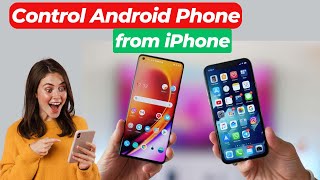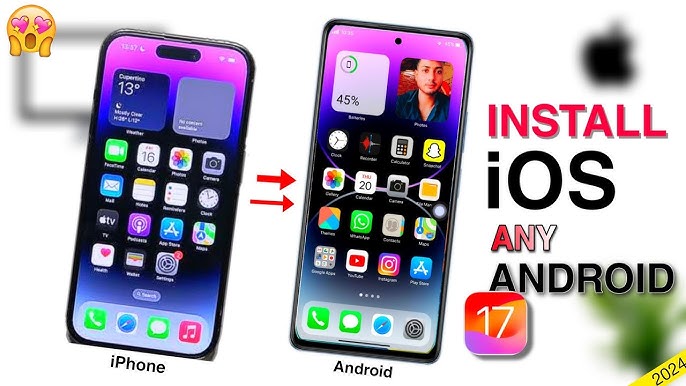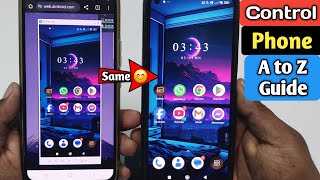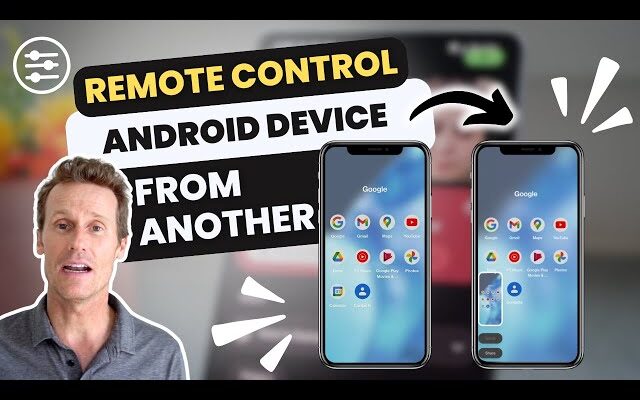How to Control Smart Devices on Your Android Phone
Smart home devices like thermostats, lights, locks, cameras, and speakers have become a significant part of our everyday lives. With Android phones, you can easily control these devices directly from your mobile device, without needing to open a specific app. In this blog, we will show you how to set up and use home controls on your Android phone to manage all your connected devices seamlessly.
What Devices Can You Control?
Android’s home control feature works with a wide range of smart home devices that you have connected through the Google Home app. Some of the most common devices you can control include:
- Lights
- Thermostats
- Locks
- Cameras
- Plugs
- Vacuums
- TVs
- Speakers
Important: Device Compatibility

Keep in mind that some of these features are only available on Android 11 and later versions. If you’re unsure of your Android version, you can easily check it by going into your phone’s settings.
Setting Up Home Controls on Android
To start controlling your smart devices from your Android phone, you’ll first need to set up the Google Home app. Here’s how you can do that:
- Download the Google Home App: If you don’t already have it, download the app from the Google Play Store.
- Open the Google Home App: Touch and hold the app icon, then tap on ‘App Info.’
- Enable the App: If the app is not enabled, tap on ‘Enable’ to activate it.
- Connect Your Devices: Once enabled, connect all your compatible smart devices to the Google Home app.
Controlling Connected Devices from Your Phone
Once your devices are connected, you can easily control them through the Google Home app on your Android phone. Here’s how:
- Access the Home Controls: From the bottom left of your lock screen or Quick Settings, tap on the Google Home icon.
- Choose the Action: You can perform various actions such as:
- Turn devices on or off
- Adjust the brightness of your lights
- Set the thermostat temperature
- View live video feeds from cameras
- Pause music or videos
Tip for Easy Device Access:
The first time you access home controls, your Android phone will automatically display a few devices. To add more devices, go to the home controls screen, tap on “More,” and then select “Add Controls.”
Customizing Your Device Panel
You can personalize which devices show up in your home controls panel. Follow these steps to modify the display:
- Wake Your Phone: Press the power button, tap the screen, or lift your phone to display the lock screen.
- Access Home Controls: Tap the Google Home icon from the bottom left of your lock screen or Quick Settings.
- Edit or Reorder Devices:
- Tap Edit to remove devices by checking the box next to the device name.
- Tap Reorder to rearrange devices. Hold down on a device and drag it to the desired position.

Tip:
Any changes made here will also reflect in the Google Home app’s favorites tab.
Remote Device Control with RemoteView
If you need to control devices outside your home or office, the RemoteView app allows you to control both Android and PC devices remotely. Here’s how it works:
Mobile Remote Access
- Device Control from Mobile: Remotely control your Android device using another mobile device or PC. You can manage your Android phone from your PC or vice versa by installing the RemoteView app.
- Virtual Mouse and Touch Control: You can use virtual mouse control for fine adjustments or tap control for quicker interactions on your Android device screen.
Key Features:
- Quick Menu: Access frequently used programs or apps for a more streamlined remote control experience.
- Special Keys: Use keyboard shortcuts and special keys that may not be available on your phone’s keypad.

Remote Control Anywhere, Anytime:
Whether at home or away, you can easily manage your devices with the RemoteView app. It provides an efficient way to control your Android device remotely, whether for personal or professional needs.
How to Remotely Control Your Android Phone
There are several tools available to help you control your Android phone from another device. Here are some popular methods:
1. AirDroid
AirDroid is one of the best apps for remotely controlling Android devices. It is compatible with multiple operating systems (Windows, macOS, Android, iOS) and provides a secure and easy-to-use remote control platform.
2. Vysor
Vysor lets you control your Android phone from a PC or Mac, offering screen mirroring and remote control features.
3. TeamViewer
TeamViewer is another excellent option that provides remote access to Android devices. It’s suitable for both personal and business use, enabling you to control and troubleshoot Android phones.
4. AnyDesk
AnyDesk offers remote control services with excellent speed and high-quality visuals, ensuring smooth control of Android devices remotely.

5. Screen Sharing Apps
Apps like Google Meet, Zoom, or Skype also allow you to share your Android phone’s screen with others, which can be useful for remote troubleshooting or presentations.
Tips for a Better Remote Control Experience
- Ensure a Stable Internet Connection: Remote control features rely heavily on a stable internet connection, so make sure both devices have strong connectivity.
- Grant Permissions: Some apps may require you to enable permissions like USB debugging or accessibility settings for remote control to function properly.
- Keep Security in Mind: Always be cautious when granting remote access. Avoid sharing sensitive data and ensure you’re using trusted apps.

With the tools and steps outlined above, controlling your smart devices and Android phone from a distance has never been easier. Whether you’re managing your home’s smart gadgets or remotely accessing your Android phone, these methods provide convenience and flexibility.



